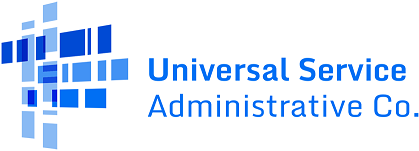Consortia
Definition of a Consortium
A consortium (plural consortia or consortiums) is a group of E-Rate eligible entities that is seeking competitive bids or E-Rate funding for eligible services on behalf of its members who are E-Rate eligible entities. Schools and/or libraries can form consortia for the purposes of the Schools and Libraries (E-Rate) program to aggregate demand in order to lower prices and promote more efficient use of shared facilities.
Some consortia, for example, library consortia, may have been formed originally for reasons unrelated to the E-Rate program. The consortium can be established by an organization that is not itself eligible for E-Rate support, however in order to receive E-Rate funding, Consortium members that are receiving requested services must be E-Rate eligible.
Consortium Lead Member
The consortium must designate an entity as the consortium leader. The consortium leader can be one of the E-Rate eligible entities or an outside entity, such as the organization that established the consortium. A Tribal government can create a consortium and include its Tribally controlled schools and libraries as consortium members, and a Tribal government employee can act as the contact person for the consortium leader.
The consortium leader is responsible for ensuring that necessary certifications are made and for responding to USAC inquiries on behalf of the consortium members during both pre- and post-commitment processes. (USAC’s issuance of a Funding Commitment Decision Letter (FCDL) is the event that separates pre-commitment processes from post-commitment processes.)
The consortium leader also has certain document retention responsibilities and, unless membership in the consortium is specifically required by state statute or authorized in some other way, must retain a Letter of Agency (LOA) or other documentation from each consortium member to demonstrate that that member was aware of, and had expressly authorized, the actions that would be taken on its behalf by the consortium leader.
If services are shared by both eligible and ineligible entities, the consortium lead member must perform a cost allocation to ensure that only the eligible entities receive the benefit of the E-Rate discounted services.
Pre-Commitment Responsibilities
When the consortium leader makes the FCC Form 471 certifications, the consortium leader is certifying that, among other things:
- Each member has secured access to all the necessary resources (i.e., computers, training, software, maintenance and electrical connections) to make effective use of the requested discounts.
- Each member has complied with state and local procurement laws as well as all E-Rate program rules.
- That the most disadvantaged schools and libraries receive an appropriate share of benefits from shared services.
The consortium leader may be asked during the Program Integrity Assurance (PIA) application review or during an audit to provide documentation that supports these certifications.
The consortium leader is also responsible for ensuring that the services for which the consortium requests E-Rate support are the services that the consortium is authorized to procure on behalf of its members. Failure to do so may result in the denial or modification of funding requests for consortium members.
Post-Commitment Responsibilities
The consortium leader must collect from each consortium member a signed FCC Form 479, Certification by Administrative Authority to Billed Entity of Compliance with the Children’s Internet Protection Act, to establish that member’s status under the Children’s Internet Protection Act (CIPA). After all FCC Forms 479 have been collected, the consortium leader can complete the FCC Form 486, Receipt of Service Confirmation and Children’s Internet Protection Act and Technology Plan Certification Form.
The FCC Form 479 is not required if the consortium requested funding only for services to which CIPA does not apply.
Records must be retained for a period of ten years after the last day of service delivered for a particular funding year and may be requested during an audit or other review processes.
Creating a New Consortium
If you are creating a new consortium, each entity joining the consortium will need an entity number. See the Entity Numbers page for more information.
